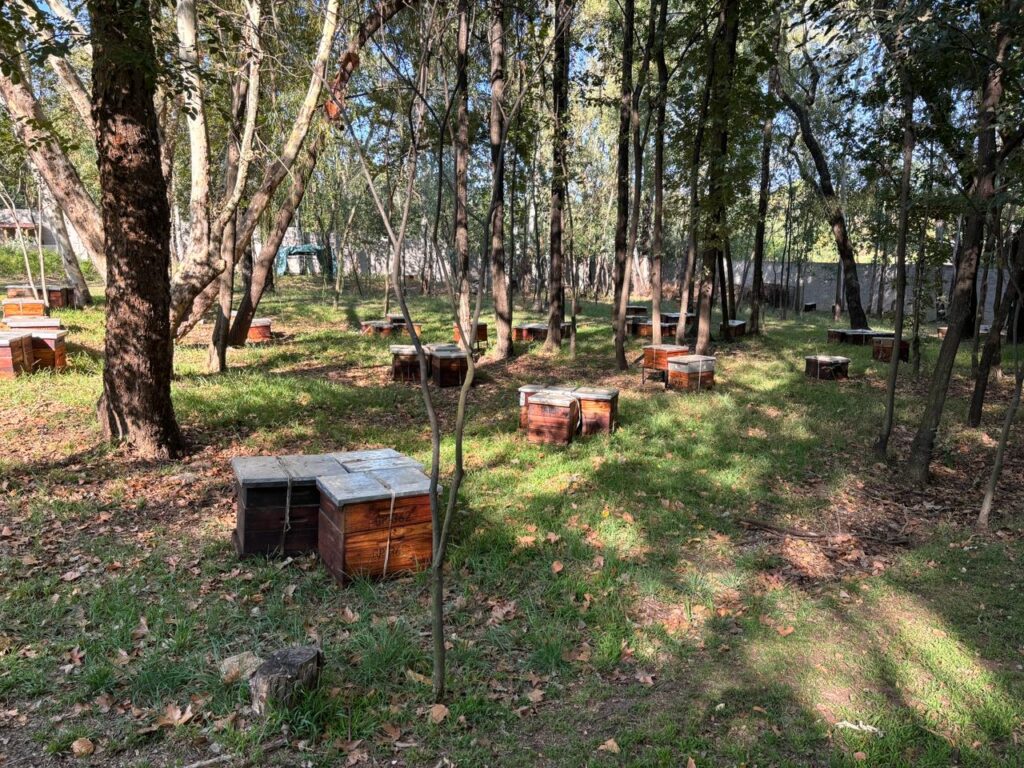Eucalyptus Honey Origin
The Wonders of Eucalyptus Honey: Origins, Flavor, and Perfect Pairings
Eucalyptus honey, also known as Blue-gum honey, is a unique and flavorful variety with a rich history and a distinct taste. If you love honey that’s bold, aromatic, and earthy while packed with health benefits, this might just become your new favorite. But where does it come from? What does it taste like? And most importantly, how can you enjoy it best? Let’s dive into the delicious world of eucalyptus honey!
The Origins of Eucalyptus Honey
Eucalyptus trees originate from Australia, where they are commonly associated with koalas. They were introduced to South Africa in 1870 by the British due to their ability to grow quickly in dry conditions, making them ideal for forestry. Initially planted for shade, shelter, and timber production, they are now a major source of wood. With over 700 species worldwide, South Africa alone has 85 species spread across different provinces.
In Gauteng, the dominant species are Red River Gum and Black Ironbark, while Mpumalanga is home to Eucalyptus grandis, mainly used for wood production. What makes eucalyptus honey extra special is the natural compounds found in these trees, known for their antimicrobial and soothing properties. Indigenous cultures have long used eucalyptus for its healing benefits, and when infused into honey, it becomes a powerhouse of natural wellness. If you’re looking for honey with both a story and a purpose, eucalyptus honey delivers both!

Flavor and Color Profile
If you’re accustomed to the mild sweetness of clover honey, eucalyptus honey will surprise you in the best way possible. It has a robust, slightly earthy taste with hints of caramel, menthol, and sometimes even a touch of spice. The flavor varies depending on the specific eucalyptus species the nectar comes from, but it always carries a distinctive richness.
In terms of color, eucalyptus honey ranges from amber to dark golden brown. Generally, the darker the honey, the stronger the flavor, while lighter honey tends to be sweeter. It also has a thicker consistency than many other honey varieties, making it perfect for drizzling over food or stirring into warm drinks. Thanks to its natural antibacterial properties, eucalyptus honey takes longer to crystallize, maintaining its smooth texture for an extended period.
Perfect Pairings: How to Enjoy Eucalyptus Honey
Now that we’ve covered its origins and flavor, let’s talk about the fun part—eating it! Eucalyptus honey’s bold taste makes it a versatile addition to both sweet and savory dishes. Here are some of the best ways to enjoy it:
- Stirred into Tea – Its natural menthol-like notes make eucalyptus honey an excellent addition to herbal teas like chamomile, mint, and ginger. It not only sweetens your tea but also soothes sore throats and helps clear congestion.
- Drizzled Over Cheese – If you love a good cheese board, eucalyptus honey should definitely make an appearance. It pairs beautifully with strong, aged cheeses like blue cheese, gouda, and sharp cheddar, balancing their saltiness with a touch of sweetness.
- Spread on Toast – Swap your regular honey for eucalyptus honey on toast with butter or nut butter. The deep, caramelized notes create a perfect balance of sweetness and warmth.
- Used in Marinades – The bold, slightly smoky flavor of eucalyptus honey makes it a great addition to marinades for chicken, pork, or roasted vegetables. It adds a touch of sweetness while complementing smoky or citrusy flavors.
- Mixed into Yogurt and Smoothies – If you love creamy textures, try adding eucalyptus honey to Greek yogurt or blending it into smoothies. It enhances natural sweetness while adding a unique depth of flavor.
- Baking with It – Eucalyptus honey is a fantastic substitute for sugar in baked goods. Use it in muffins, bread, or even homemade granola for a natural, nutrient-packed sweetness.
For more honey recipes, download our sugar-free recipe book here: Download Recipe Book
Fun Facts About Eucalyptus Trees
- Depending on the species, a eucalyptus tree can grow between 10m and 60m in height.
- Eucalyptus trees are also known as gum trees because of the sticky, rubbery substance that excretes from injured bark.
- Eucalyptus flowers have no petals!
- Koalas, greater gliders, and ringtail possums are the only animals in the world that can survive on a diet of eucalyptus leaves. These leaves are highly toxic, which is why koalas sleep up to 20 hours a day as their bodies work to process the toxins.
- Eucalyptus trees help manage wastewater, as environmental engineers use them to filter heavy metals and toxins found in agricultural wastewater.
The Reality of Eucalyptus Today
Despite their many benefits, eucalyptus trees have come under fire, with calls for their removal due to claims that they consume excessive amounts of water. However, research from the South African Water Research Commission (WRC) has shown no conclusive scientific evidence to prove that eucalyptus trees use more water than other species. In fact, eucalyptus trees are among the most water-efficient compared to pine and other plantations, producing less evaporation overall. Their roots grow as shallow as possible and as deep as necessary, depending on water availability.
https://www.sappi.com/eucalypts-and-water-use-in-south-africa
So, while they do consume water, they do so as efficiently as any other tree. Unfortunately, eucalyptus has been unfairly blamed for water shortages, leading to unnecessary deforestation that also harms the bees relying on them for nectar.

Conclusion
Eucalyptus honey is more than just a delicious treat—it’s a honey with history, health benefits, and a rich, complex flavor profile. Whether you enjoy it in tea, drizzled over cheese, or as a natural remedy, it’s a unique honey worth exploring. Despite the misconceptions surrounding eucalyptus trees, they continue to play an important role in nature and the honey industry. So next time you reach for a jar of honey, why not make it eucalyptus honey? Your taste buds—and your body—will thank you!






